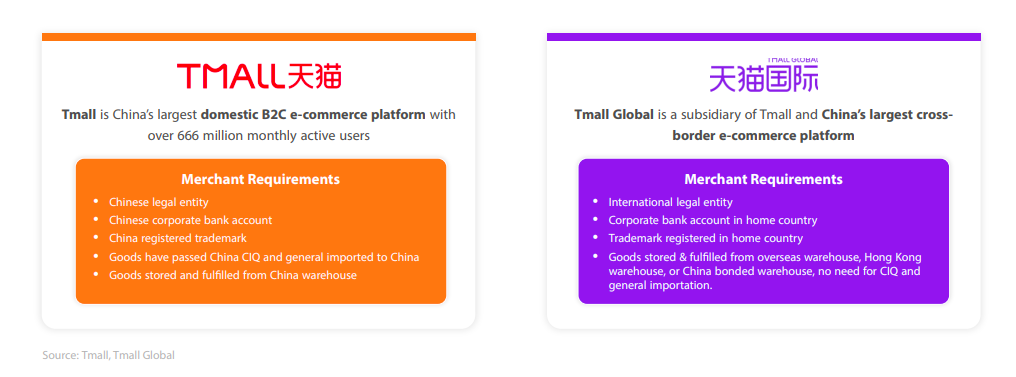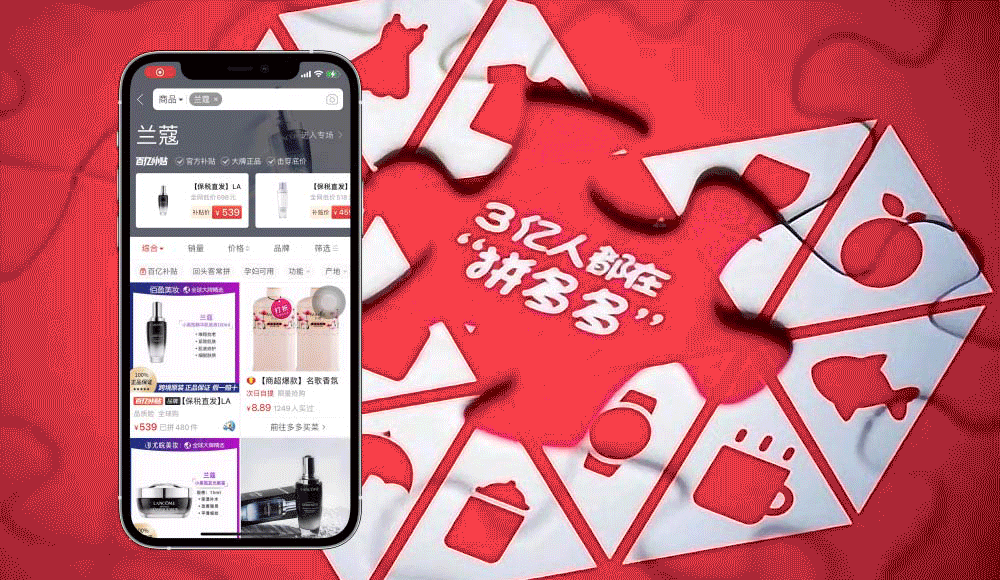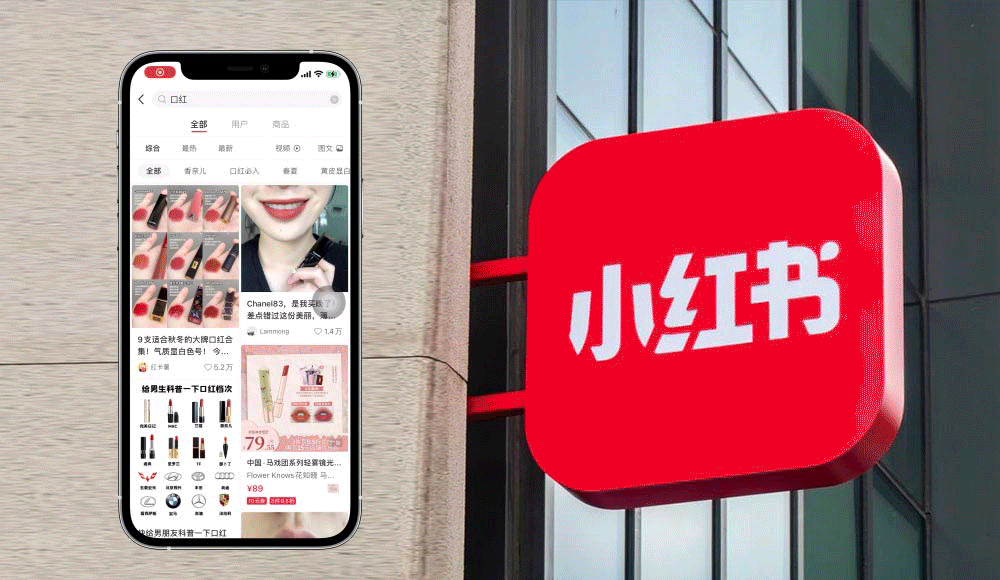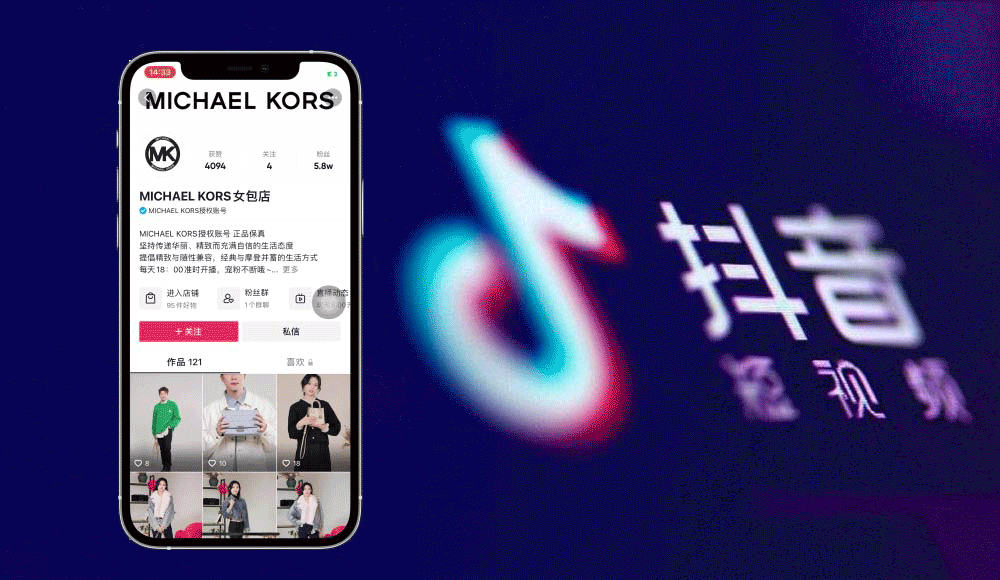Top Chinese E-commerce Marketplaces & Platforms In 2023 You Should Know
Top 7 E-commerce Marketplaces & Platforms in China.
The Chinese market presents enormous opportunities to international brands, it is the biggest e-commerce market in the world. According to China Customs, China’s cross-border e-commerce sales (import) surpassed 560 billion Yuan ($78 billion dollars) in 2022, an increase of 4.9% year-over-year.
Alibaba's Taobao and Tmall are the largest e-commerce businesses in China with a commanding 50.8% market share, followed by JD.com (15.9%) and Pinduoduo (13.2%).
Chinese consumers are quite digitalized and accustomed to online shopping. Additionally, the proliferation of new e-commerce marketplaces in the past few years has significantly transformed how brands approach customers in China. Understanding each platform's strategy, trends, and market shifts are requisite for China's success.
On this page, we will introduce you to some of the most popular Chinese online marketplaces for foreign brands.
| If you’re looking for a China marketplace solution, Azoya can help. Here is an article that helps you decide whether to register a Chinese trademark is right for your business in China. |
1. Alibaba: Tmall & Tmall Global
Tmall was launched in 2008, originally named Taobao Mall, and is an e-commerce platform owned by Alibaba. According to Goldman Sach, the Tmall platform boasted 380 million daily active users in March 2023 and 877 million monthly active users during the second quarter of the same year.
Tmall Global is a sub-platform of Tmall where international merchants sell imported products through cross-border e-commerce, is the largest B2C cross-border e-commerce platform in China. The platform allows brands and retailers without entities in China to build virtual storefronts and deliver products into the lucrative China market from their home countries.
 With Tmall Global, products can be shipped directly from abroad or stored in bonded warehouses in free trade zones, allowing faster shipping and customs clearance. Tmall Global fees are even higher than Tmall’s standard fees, to provide more protection against counterfeit products. According to the public data of Tmall International, there are more than 29,000 overseas brands from 87 countries and regions, covering more than 5,800 categories, of which more than 80% are entering China for the first time.
With Tmall Global, products can be shipped directly from abroad or stored in bonded warehouses in free trade zones, allowing faster shipping and customs clearance. Tmall Global fees are even higher than Tmall’s standard fees, to provide more protection against counterfeit products. According to the public data of Tmall International, there are more than 29,000 overseas brands from 87 countries and regions, covering more than 5,800 categories, of which more than 80% are entering China for the first time.

| Download our Whitepapert to Know More- Is Your Brand Ready For Tmall? This whitepaper published by Azoya runs through a rough "brand audit" to identify whether or not a brand has potential on Tmall. |
2. JD: JD Worldwide
Founded in 1998, JD.com is the largest B2C online retailer in China and one of the biggest competitors to Alibaba. It provides about 400,000 new products including cell phones, home appliances, apparel, electronics, and more. According to the newsletter released by JD, as of August 3, 2023, the customer base of JD reached nearly 600 million. The consumption frequency and single customer volume of new and existing users are continuously improving.
With 28 "smart" fulfilment centers and 750 warehouses around China, JD.com is known for its large logistics network. 90% of purchases are delivered the same or the next day, and the company is working on completely automated warehouses and drone delivery to speed up the process even further. Third-party sellers can use JD.com's logistics network to fulfil orders, similar to Amazon's FBA service.
A sub-platform of JD is JD Worldwide, similar to Tmall Global. JD Worldwide gives international brands a seamless way to enter the Chinese market, helping brands test the market and discover bestselling products. In the past two years, JD’s strong supply chain allowed JD Worldwide to help more overseas brands to step up and grow in the Chinese market, and keep providing imported products that meet customer demands.

3. Kaola
Even though Tmall and JD.com are the leading e-commerce platforms in China, Kaola also generates quite a lot of traffic. Kaola was acquired by the Alibaba group in 2019 and has over 10 million active monthly users in 2020, is a major player in the cross-border e-commerce realm.
Kaola’s unique distribution model sets it apart from other CBEC competitors in the Chinese market. The company has established incredibly strong relationships with global brands and therefore is able to purchase inventory directly from those brands. This allows them to bypass any intermediaries which therefore allows them to lower costs for their consumers.
Additionally, Kaola’s platform allows foreign manufacturers to enter China’s complex market. Kaola also handles third-party cross-border logistics along with other major pieces of the global supply chain that are needed when importing goods to China such as warehousing and after-sales services. This allows the global brands that use Kaola’s platform to more speedily and easily enter the market.

4. Pinduoduo
Founded in 2015, Pinduoduo is an e-commerce platform that allows users to participate in group-buying transactions. By offering group-buying discounts, Pinduoduo encourages consumers to share deals.
With over 910 million users in China, Pinduoduo is also one of the fastest-growing eCommerce platforms in the Chinese marketplace. Pinduoduo has been focusing on smaller Chinese cities by offering the best deal and the possibility for users to work and in hand to get items at a bulk price.
On Pinduoduo, consumers can discover and buy products from a wide range of sellers. what sets Pinduoduo apart is its social aspect, as users can easily share what they browse or buy through the social network. They can also invite them to join a group buying team within 24 hours to benefit from lower prices.

5. Wechat: Mini-program
WeChat Mini-programs are mini-apps that can be developed and accessed within WeChat. Mini-programs launched in January 2017, most mini-programs can be developed quicker than downloadable apps.
According to WeChat open class, as of the third quarter of 2022, the number of daily active users of the WeChat mini-programs has reached 600 million, up 30% from 2021. The transaction volume of mini-programs in retail and travel industries sees 100%+ YOY growth.

| Download Our 85-pg WeChat Mini-Program Playbook for E-commerce 2021 This playbook gives a quick introduction to WeChat Mini-program, and how top retail players in luxury, beauty, and fashion are using WeChat Mini-program to achieve impressive results.  |
6. Little Red Book
Little Red Book or Red, founded in 2013, is a community-based e-commerce platform with 200 million monthly active users, 50% of which resides in first or second-tier cities, 72% of RED users are born after 1990, and 70% of the users' base is feminine.
Red is a blend of social media and e-commerce, which started out as a female-centric community for users to do pre-purchase research on beauty and fashion. People can research products and buy them through the platform.

7. Douyin
Douyin, the most popular short video platform in China, has been working to consolidate and develop a cross-border e-commerce business. As of October 2021, Douyin no longer supports links from 3rd parties in live streams, only allowing links from the Douyin store. In January 2021, Douyin officially launched its payment service-Douyin Pay. As a social giant that has captured young generations, it may be an interesting test ground for overseas brands to develop their cross-border e-commerce businesses.

Douyin or Tmall Global? A Guide to Launch Your Brand in China in 2022 Read this article to know more. |


